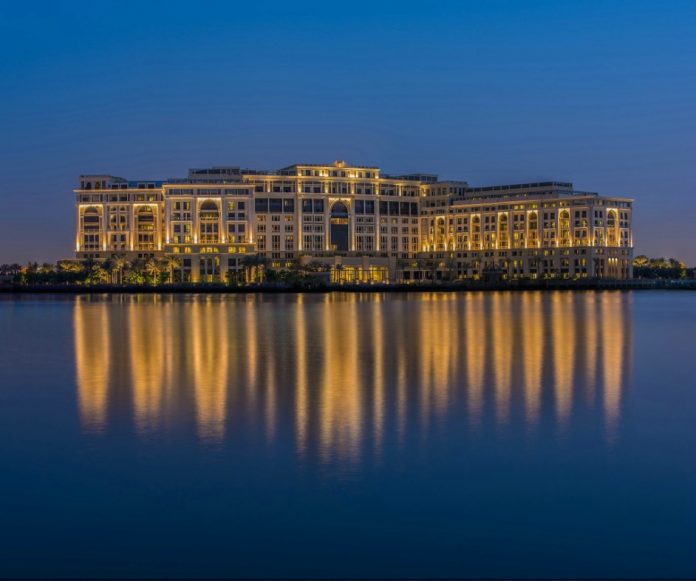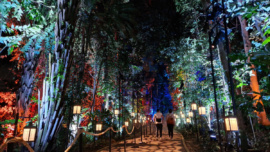One of the trends that has marked the luxury fashion world is the acquisition and construction of hotels, restaurants or beverage brands. This encounter of giants maximizes brand relevance and provides the most highly sought-after commodity of the last decade: the creation of experiences
By Mariana Correia de Barros

One of the latest news updates from the French luxury brand LVMH was the acquisition of Château du Galoupet, Cru Classé since 1955. The news was released in May and the deal was announced on the LVMH online platform in mid July. Located in Southern France, in La Londe-les-Maures, the group acquired 68 hectares of vineyards that benefit from a microclimate that refreshes the vines with cool temperatures and sea breezes. This line of business is not outlandish for a group that arose from the amalgamation of a luxury fashion and accessories brand (Louis Vuitton), and a luxury beverage brand (Moët Hennessy), in 1987. After all, the group agglomerates dozens of brands including, most notably, Christian Dior, Givenchy and Fendi in fashion; Hublot and Bulgari in watches and fine jewellery; Guerlain in cosmetics; Le Bon Marché in retail; Dom Pérignon, Veuve Cliquot, Ruinart and Château Cheval Blanc, in the beverage sector.


However, looking back, other noteworthy news related to the powerful LVMH group exemplifies how luxury brands once only associated to the fashion world, are now diversifying their growth strategies. One of those newsflashes was the announcement of the purchase of the British hotel group Belmond in December 2018, for the sum of approximately 2,8 billion Euros. On April 20th of this year, when the deal was closed, the LVMH website proclaimed a charming message: “Welcome Belmond!” In the hotel group, founded in 1976 with the acquisition of the iconic Hotel Cipriani in Venice, there are more than 40 luxury hotels around the world, including Reid’s Palace in Madeira and the Venice-Simplon Orient-Express, the most magnificent way to travel by train between Venice and London. When the deal was made public, The Guardian quoted the Frenchman Bernard Arnault, Chairman and CEO of LVMH: “The Belmond provides unique experiences for demanding travellers (…). This acquisition will significantly increase the presence of the LVMH Group in the world of tourism and hospitality.”
Since the beginning of this century, the LVMH Group has had an active role in the luxury destination sector. First, with the Cheval Blanc hotels in Saint-Tropez, Courcheval and Maldives which led to the creation of the LVMH Hotel Management insignia in 2010, to manage this line of business. Then, in 2011, the LVMH Group further expanded its activity in this area with the acquisition of Bvlgari. In this way, the sumptuous hotels of the brand in Milan, Bali, London, Beijing, Dubai and Shanghai (Paris is slated to open in 2020, Moscow in 2021 and Tokyo in 2022), came under the management of the French powerhouse, thus offering distinctive and unique synergies between fashion, accessories, hospitality, and restaurants.
The entry of fashion brands into other lifestyle areas is not new, but it has been particularly significant in recent years with the objective of diversifying experiences and offering exclusive and rare moments. Through strategic openings in key locations for the luxury market in cities such as Tokyo, Dubai or Shanghai, for example, many companies aspire to be present in more than one industry sector. To this end, they are building small empires where restaurants, hotels and even the acquisition of vineyards are opportunities that are becoming increasingly obvious.


As the story goes, the first to initiate this trend was the Palazzo Versace on the Gold Coast in Australia, back in 2000, with a recreation of the Milan flagship palace. It was decorated with opulent details and had a private marina. In 2005, the company of Italian Giorgio Armani associated itself with the Middle Eastern real estate developer Emaar Properties in order to build luxury hotels. Two are already operating: one in the Burj Khalifa skyscraper in Dubai, which boasts interiors designed by Armani himself and another in Milan, also along the same lines as the pieces designed by the House of Armani. The brand’s invitation reflects the current trend extremely well: “Stay with Armani”.
On a different level, but equally noteworthy and exemplary of the diversification of the creators of luxury brands towards the world of hotels, several other properties stand out. Notably, the Hotel Le Bellechasse in Paris where the designer Christian Lacroix left his signature in the creation of seven different universes in 33 rooms, offering a potentially unique experience with every single stay. Another example is the already legendary Grand Piano Suite in Claridges in London, completely conceived and decorated by the fashion designer Diane Von Furstenberg.
The increase in tourism, not only in Asian markets and in the Middle East, but also on idyllic islands and in European capital cities (which continue to be premium destinations, for example, Paris, London and Milan), and the growth of the luxury hotel sector are probably the main reasons for this strategic business re-alignment. According to the market research and consulting firm Grand View Research Inc., it is estimated that the global market for luxury hotels will be worth approximately 103,7 billion Euros by 2025. The same study also reveals that travellers who seek extravagant vacations also seek comfort and quality customer service, without much consideration for the costs involved. Thus, it is hardly surprising that exclusive and rare experiences are becoming increasingly appealing. Ruinart, also part of the LVMH Group, launched its activity in 2018 with a pop-up hotel overflowing with sensorial experiences. This year, it is repeating the mysterious concept, always under the name Hotel 1729 (the year the brand was founded), with a hotel with just one room, open for ten nights, in Notting Hill. This concept was executed in partnership with the designer Jonathan Anderson, creative director at Loewe, in an alliance between the champagne brand and the art world.
One of the clear objectives of this trend is also to place consumers in direct contact with luxury brands (some of which are one hundred or even two hundred years old), in unexpected ways that will undoubtedly create unforgettable memories. It is not enough to be a five-star hotel; it is necessary to offer more than just status or prestige, it is necessary to be soulful and to inspire emotion.
In a slightly different business model, but which also reflects the way in which luxury fashion brands aspire to reach new audiences, there are currently a series of names associated with the restaurant world. The Italian brand Prada, which already has its very own cultural centre (the Fondazione Prada), in 2014, purchased 80% of the Pasticceria Marchesi in Milan, an iconic pastry shop founded in 1824 which looks like something straight out of a Wes Anderson film. In addition to the original Pasticceria Marchesi, in recent years, two more locations appeared in Milan and in the spring of this year, a fourth location opened in Mayfair, London, along the same decorative lines as the first Marchesi. When the deal was sealed, Patrizio Bertelli explained to the press that “Marchesi represents a symbol of Milanese excellence (…) and our objective is to collaborate in an effective manner in its development while respecting tradition.”


One of the most popular cafés in Seoul is the Café Dior by Pierre Hermé, the famous French pastry chef known for his works of art made of sugar. It is located in the same building as the Dior boutique and serves, for example, drinks with the brand monogram designed on them. Burberry also has its very own café in its flagship store on Regent Street in London. It is called Thomas’s in honour of its founder. On the same street, right next to the Ralph Lauren boutique, we can find Ralph’s Coffee & Bar where we can indulge in a gourmet coffee, designer cocktails or savour some snack food. This café surfaced after another one in New York City, which in the meantime closed down, but which the North American brand regularly revives on the streets of the Big Apple by means of a food truck serving gourmet coffee. The fact that these cafés typically operate inside their namesake boutiques allows them to increase the duration of the experience with each brand. They give clients and potential clients more reasons to visit the physical stores and in this way, balance out the “healthy competition” with online sales. The expectation is clear: the more “quality” time spent interacting with the brand will ultimately result in an increase in revenue.
The restaurant business, which has been booming in recent years, is also increasingly based on the concept of offering an “experience” and inspires other brands to open spaces outside their physical stores. For example, Giorgio Armani has been operating the café and restaurant concept since 1998 in some of the most expensive cities in the world, such as Cannes, Milan, Tokyo and Paris. These cafés and restaurants have always been an integral part of the expansion of the lifestyle of the Armani brand.

Circling back to wines and beverages, the French brand Chanel has also acquired vineyards in Bordeaux. In 2017, it purchased Château Berliquet in Saint-Émilion, which had previously joined two French brands and another brand in Napa Valley, California. Finally, it is worth noting that all these experiences allow consumers to connect with these luxury fashion brands without necessarily making direct contact with the key products of each brand. Without a shadow of a doubt, the term “Experience Economy” coined by The Harvard Business Review in the late 1990s is becoming more and more pervasive in today’s world.



























